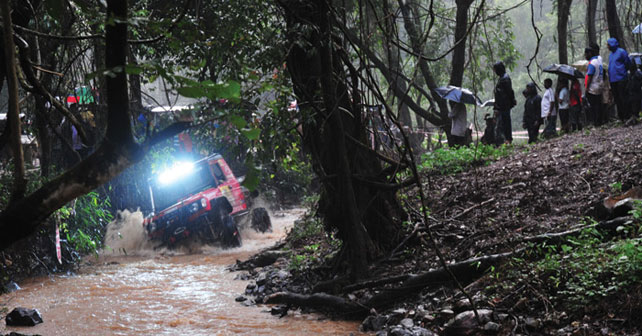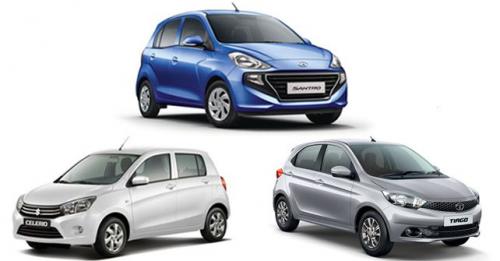The inaugural Rainforest Challenge India was a massive step up for off-road competition in India and was an eye opener for all involved
Imagine sitting in an SUV in an underground parking lot and being asked to wind through a course plotted through it as quickly as possible, turning around and coming back to where you started.
Now imagine that that parking lot is actually a bit of land with rocks, mud, a 90 degree climb, a long near vertical climb up a forest hill, a stream….you get the idea. Also imagine that whatever course is mapped out for you to finish comes with a 10 to 15 minute time limit and that you will be asked to tackle courses for an entire week.
If you had never heard of the Rainforest Challenge before, the introduction to this article is my best effort to allow you to imagine what the event is in a nutshell.
Oh, and also imagine the setting being the lush, green part of south Goa instead of the more high profile beaches in the north whose claim to fame of late is that they are a playground for the Russian and Israeli mafia and the foreign tourists who they allow to play and profit from in the months of October to February.
The inaugural Rainforest Challenge India off-road competition concluded with Force Motors’ Tang Eng Joo/Tan Choon Hong and Mervyn Lim/Hamizan Bin Abdul Hamid taking a provisional 1-2 at the top of the score sheet following seven days of competition that started with a prologue at Dona Paula on the 8th and 9th of August and concluding in a ‘Twilight Zone’ forest stage near the Goa-Karnataka border on the 14th.
Snapping at the heels of the factory backed Force Motors vehicles were Chandigarh’s Gerrari Offroaders. Kabir Waraich/Gagan Sachdeva, Gurusahib Singh/Tajinder Pal Singh, Karan Bali and Gurmeet Virdi took third, fourth and fifth, respectively.
A NEW EXPERIENCE
The experience was something of a turning point as far as off-roading competitions in India are concerned. Normally held at a local level or by automotive manufacturers to promote their products (while entertaining their customers and sometimes even the media) the event was the first time off-roaders converged from all over the country to compete against each other.
Everything from the idea of tools fitted to the vehicles – electric winch, high lift jack, ground anchor and dampeners – being used as a first resort instead of after furiously revving a car and burning the clutch plate (happened a LOT) to the scoring format, where points and penalties were tallied instantly, was a novelty for all but the most experienced competitors.
Those with the most experience just happened to be employed by the factory Force Motors team, i.e. the two Malaysian teams that took first and second overall in the event.
How different the event was to the more commonly run Indian Rally Championship (IRC) rounds and cross country rally events like the Raid de Himalaya and Desert Storm was brought home by the fate of the third Force Motors team of Sanjay Singh/Jay Sridhar.
“We used to look at rich guys showing off with winches and jacks,” Singh told autoX. “But at this event and in particular on this terrain with so much mud and slush, we now know that such tools are not for show.
“It’s been a real eye opener for us not just in terms of the kind of event it was, but also how well it was organized and run by Cougar Motorsport.”
ONCE BITTEN, NEVER SHY
Throughout the event, there was a palpable sense among pretty much all the competitors that they wanted to try their hand at the event again. This was clear even on the day of the prologue, where many competitors got a chance to see if their vehicles would be up to the punishment they would receive in the forest stages. Predictably, there were entrants who thought discretion was the better part of valour, but still tagged along with those willing to go all out till the end.
Speaking to competitors, the cost of bringing a vehicle to the start of the event in Dona Paula, Goa was approximately Rs.3.75 to 4 lakh based on how much the vehicle itself cost and the competitors’ ingenuity in sourcing the accessories needed to get their cars through pre-event scrutiny.
Not surprisingly, Maruti-Suzuki’s ever reliable Gypsy and the Mahindra CJ3B were the two most common cars in the event outside of Force Motors’ factory prepared monsters (standard drivetrain but featuring tricks like hydraulic suspension and steering).
The idea of properly preparing and smartly tackling a course was almost constantly repeated to the competitors by the more experienced observers as well as the ‘course master’ of the event, David Metcalfe.
“You don’t always need a big and powerful car to charge up obstacles,” Metcalfe told autoX. “Just make sure the car is light, has good power to weight ratio, is reliable and don’t rely on tools like winches as a last resort.”



































Write your Comment